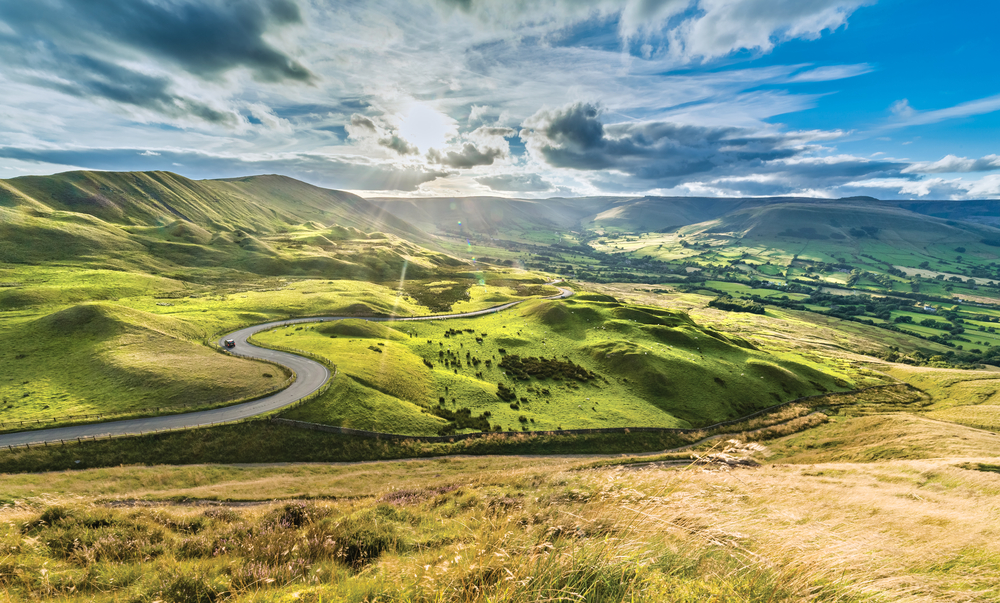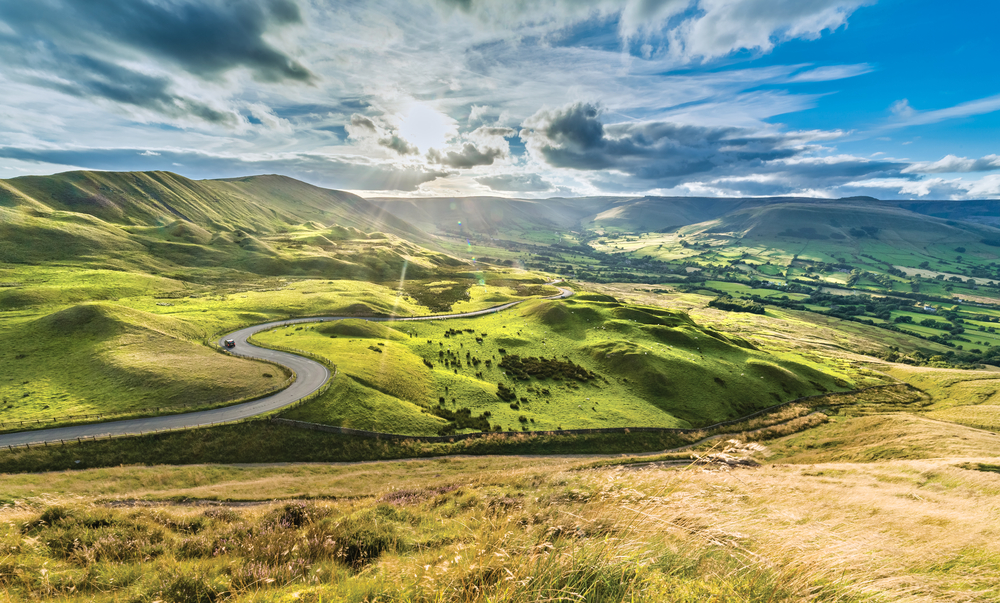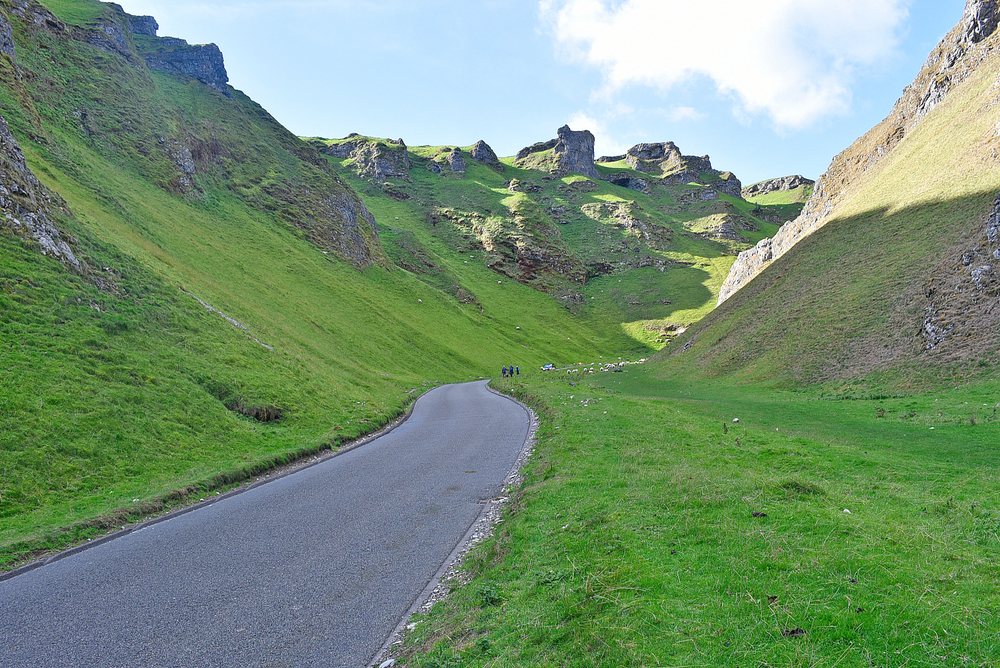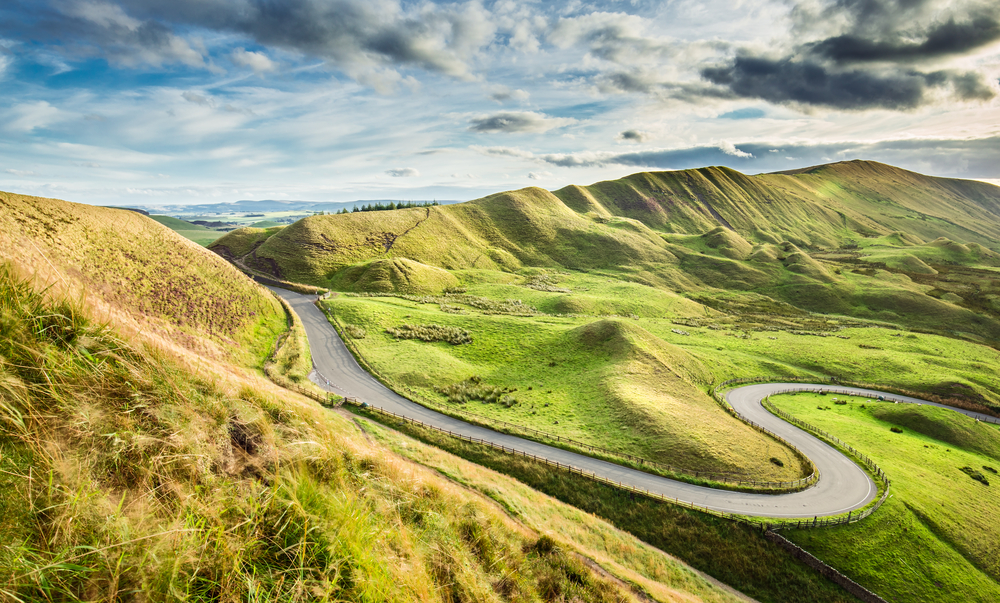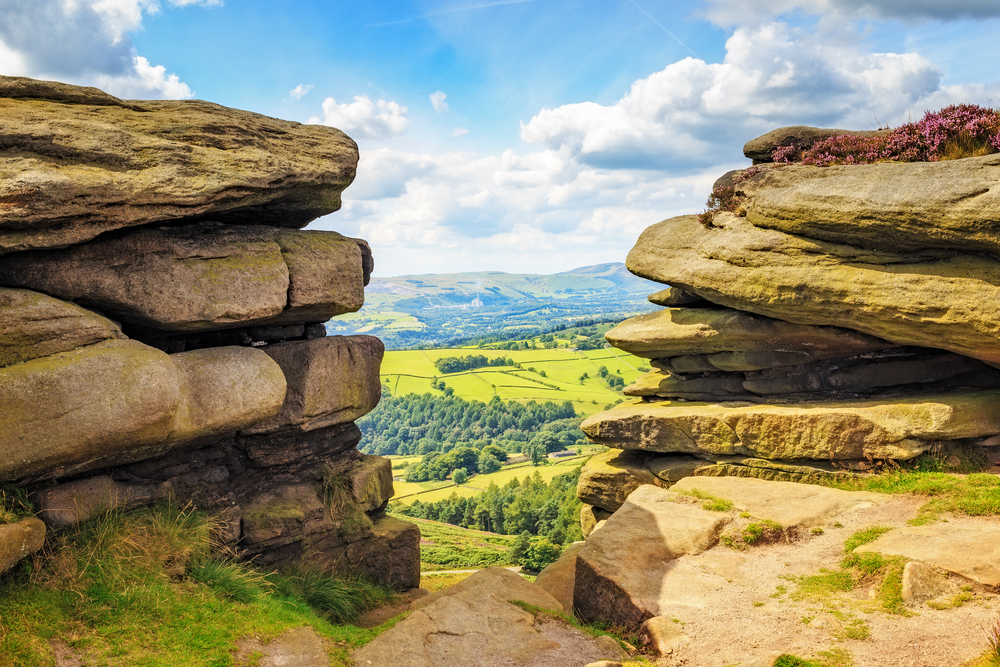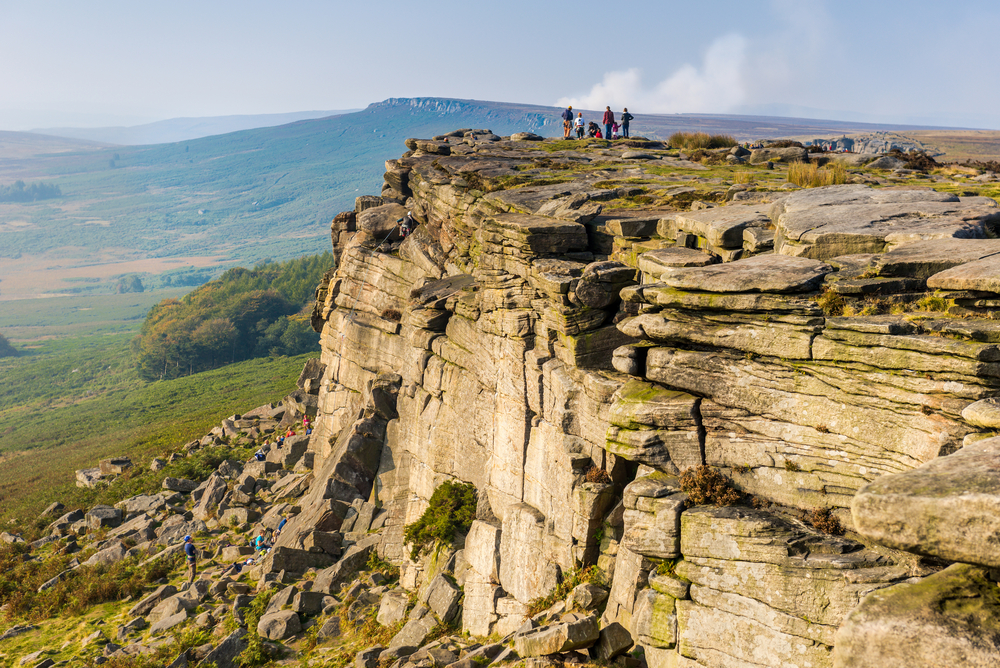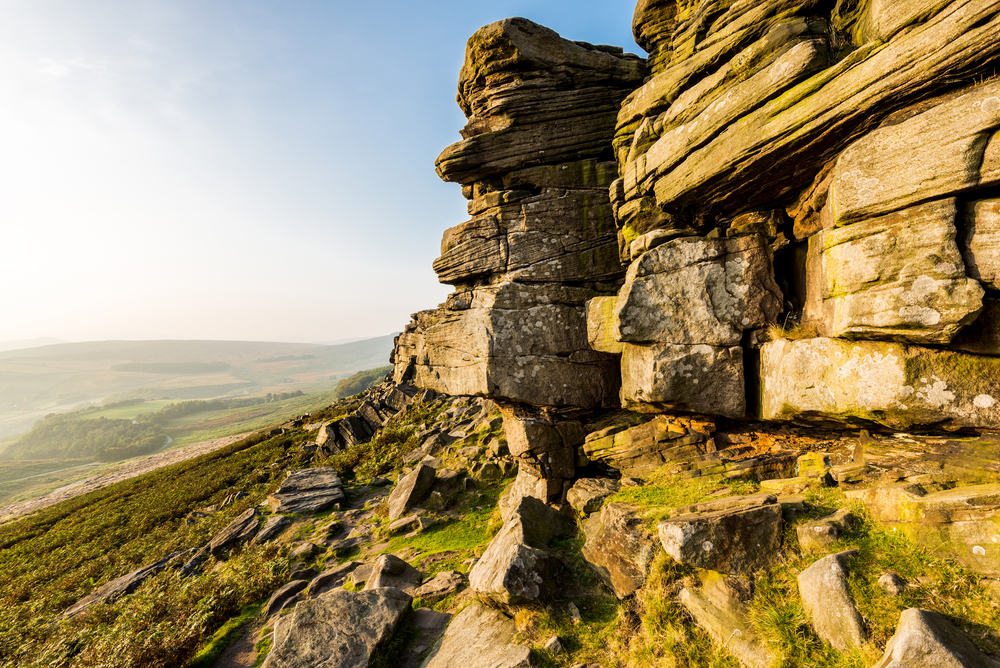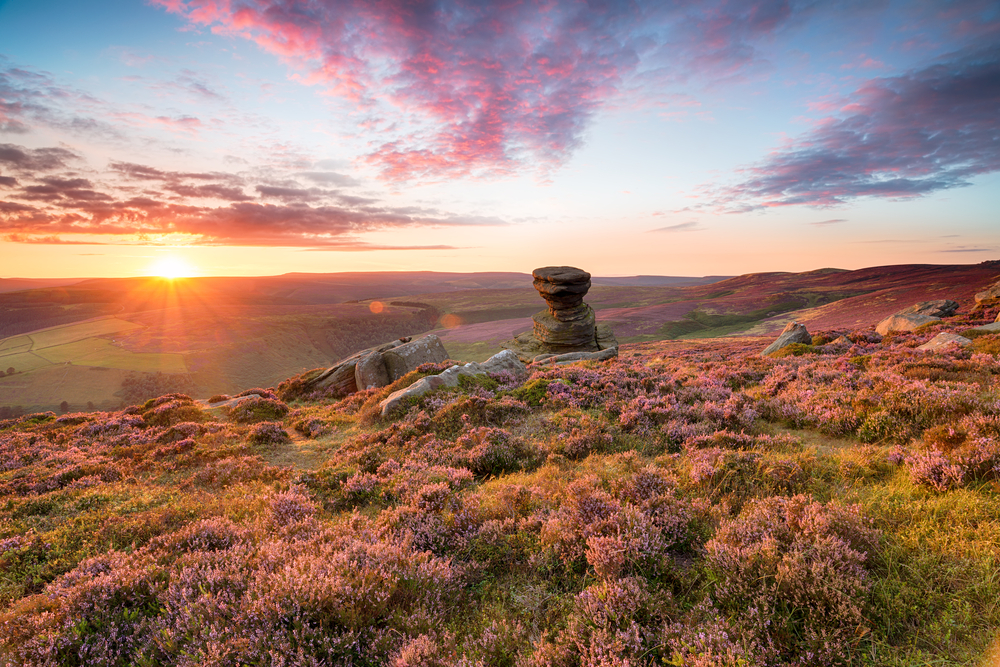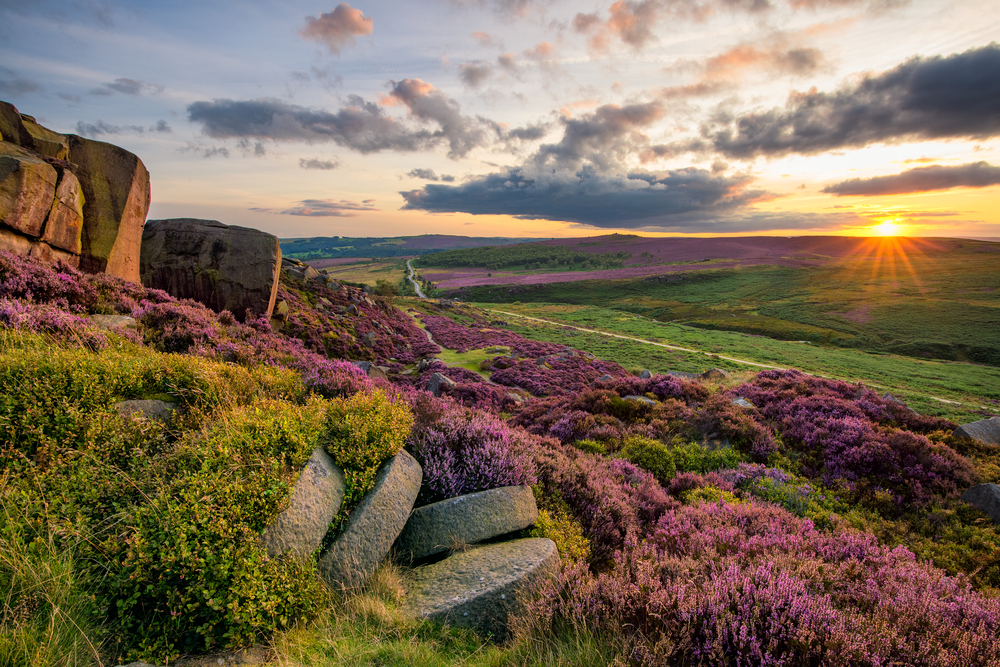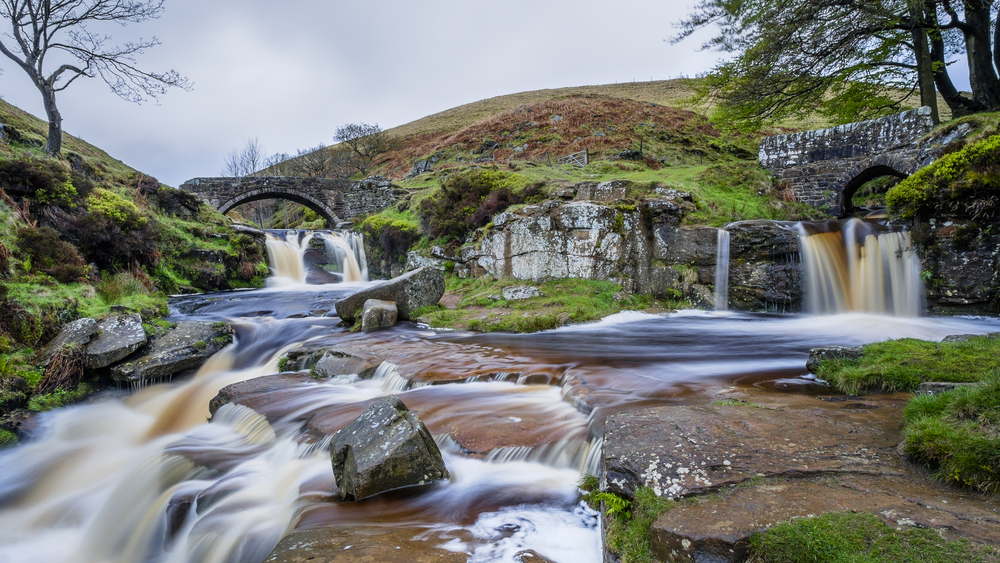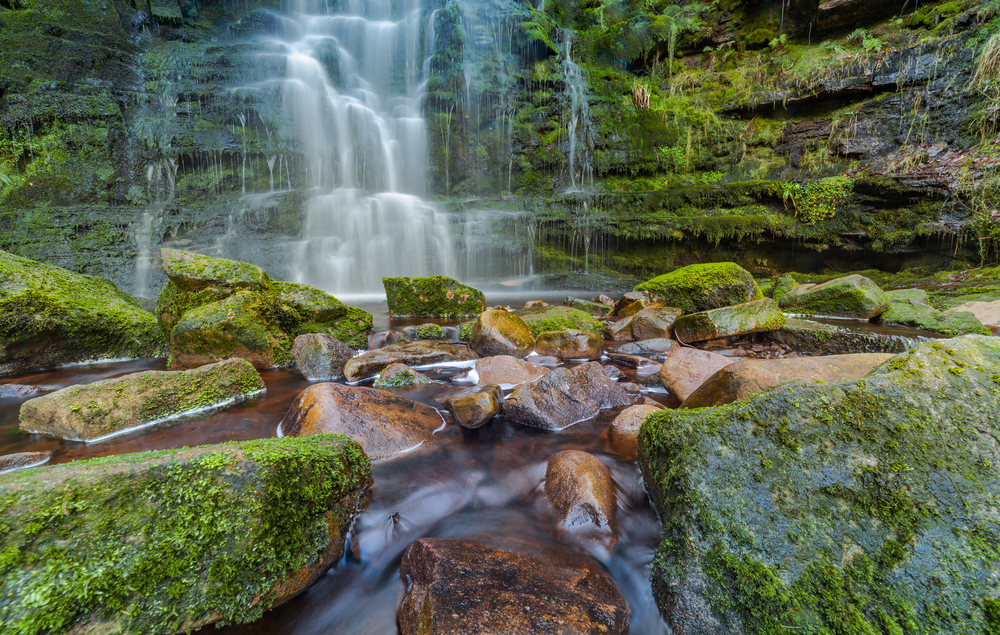Peak District National Park is located toward the northern part of central England. Although it includes portions of six different counties, the majority of it is situated in Derbyshire. The park covers an area of 555 square miles (1,440 sq km) creating the 5th largest park in the United Kingdom. It is a GANP Ambassador Park.
Peak District has the distinction of being the first national park in the entire United Kingdom. The park represents diversity being comprised of moorland, mountainous, plateaus, limestone plateaus, and gritstone areas. There are several rivers that meander amongst the rolling hills and support some of the diverse vegetation and countryside.
The park may also be separated into two regions known as the Dark Peak and White Peak areas. The Dark Peak is characterized by the moorland features while the White Peak area displays the limestone plateaus. The landscapes include rolling hills, valleys, plateaus, gorges, and striking escarpments.
Kinder Scout is the tallest point in the park reaching a height of only 2,087 feet (636 m). Although named Peak District, there are no dramatic summits nor striking mountains. However, there are plenty of rolling hills and sculpted picturesque landscapes.
Like neighboring Lake District National Park, Peak District offers opportunities to explore villages, small towns, country houses, and historic heritage locations. Similarly, the National Park Authority only owns 5% of the land area where the remained is privately owned or other sources.
The Dark Peak and White Peak areas feature varied vegetation including moorland, grassland, and woodland giving way to a variety of wildlife. Red deer represent the larger species with the majority of wildlife being smaller creatures like the marten, otter, hedgehog, brown hare, and the polecat. There are a variety of traditional species of birds that nest or migrate through the park.
Photos
Things to See
Peak District National Park Trails
One of the primary activities of the national park is hiking throughout the wilderness and between the towns and villages. There are over 1,800 miles (2,900 km) of trails that traverse through, around, and over the varying landscapes of the park.
Park Protection
The primary purpose of the park is to protect the rolling hills and diverse landscapes from further development of inhabitants. The largest struggle comes from trying to balance the desires of the residents living in the area, the wishes of the travelers and visitors, and the efforts to protect the area. It is a constant juggling act.
The park is committed to protecting the wilderness that surrounds the various towns and villages while trying to maintain an additional commitment by providing ways for visitors to experience the natural outdoors and exquisite nature of the moorland and upland areas.
Sources
- All Trails, Best Trails in Peak District National Park, https://www.alltrails.com/parks/england/staffordshire/peak-district-national-park/river, retrieved July 2020.
- Britannica, Peak District, https://www.britannica.com/place/Peak-District-National-Park, retrieved July 2020.
- Culture Trip, 12 Reasons Why You Should Explore Peak District, https://theculturetrip.com/europe/united-kingdom/england/articles/12-reasons-why-you-should-explore-englands-peak-district/, retrieved July 2020.
- Peak District, Welcome to Peak District, https://www.peakdistrict.org/, retrieved July 2020.
- Peak District National Park, government site, https://www.peakdistrict.gov.uk/home, retrieved July 2020.
- Visit Buxton, Peak District, https://www.visitbuxton.co.uk/peak-district-national-park/, retrieved July 2020.
- Visit Peak District, Peak District and Derbyshire, https://www.visitpeakdistrict.com/, retrieved July 2020.
